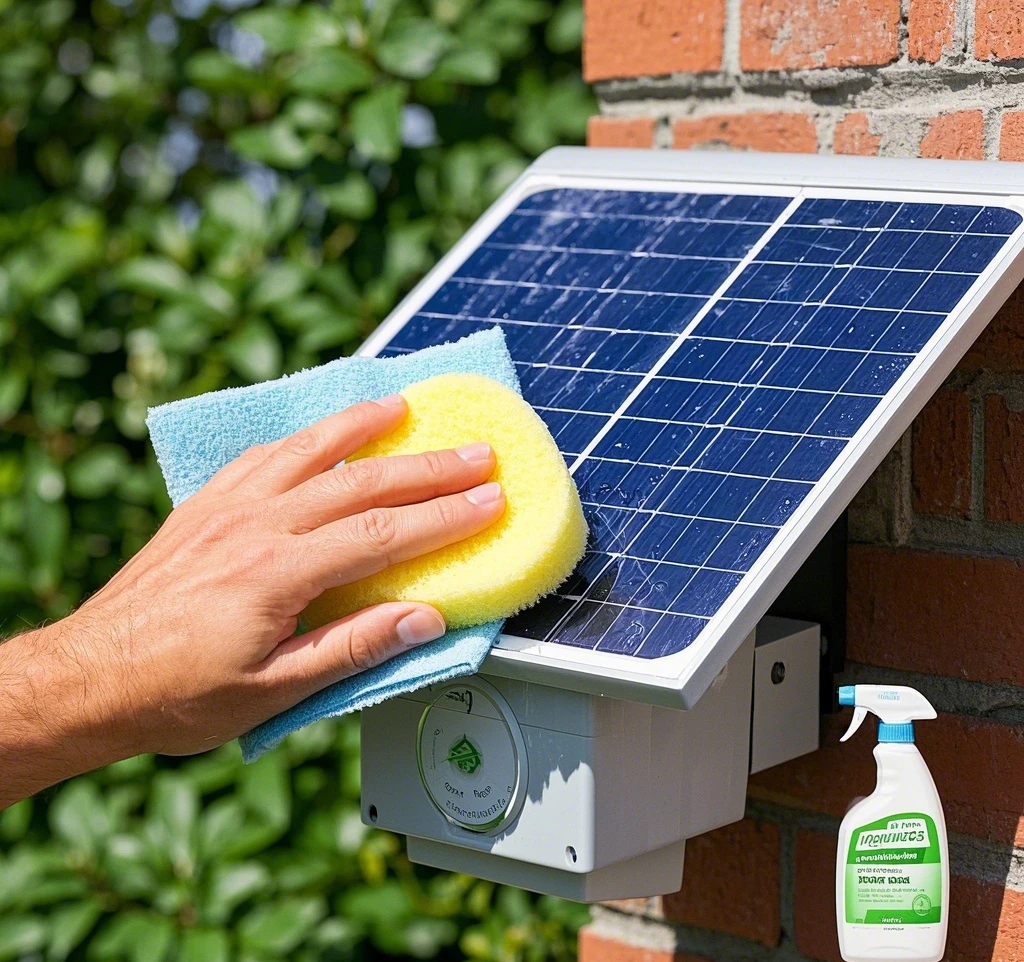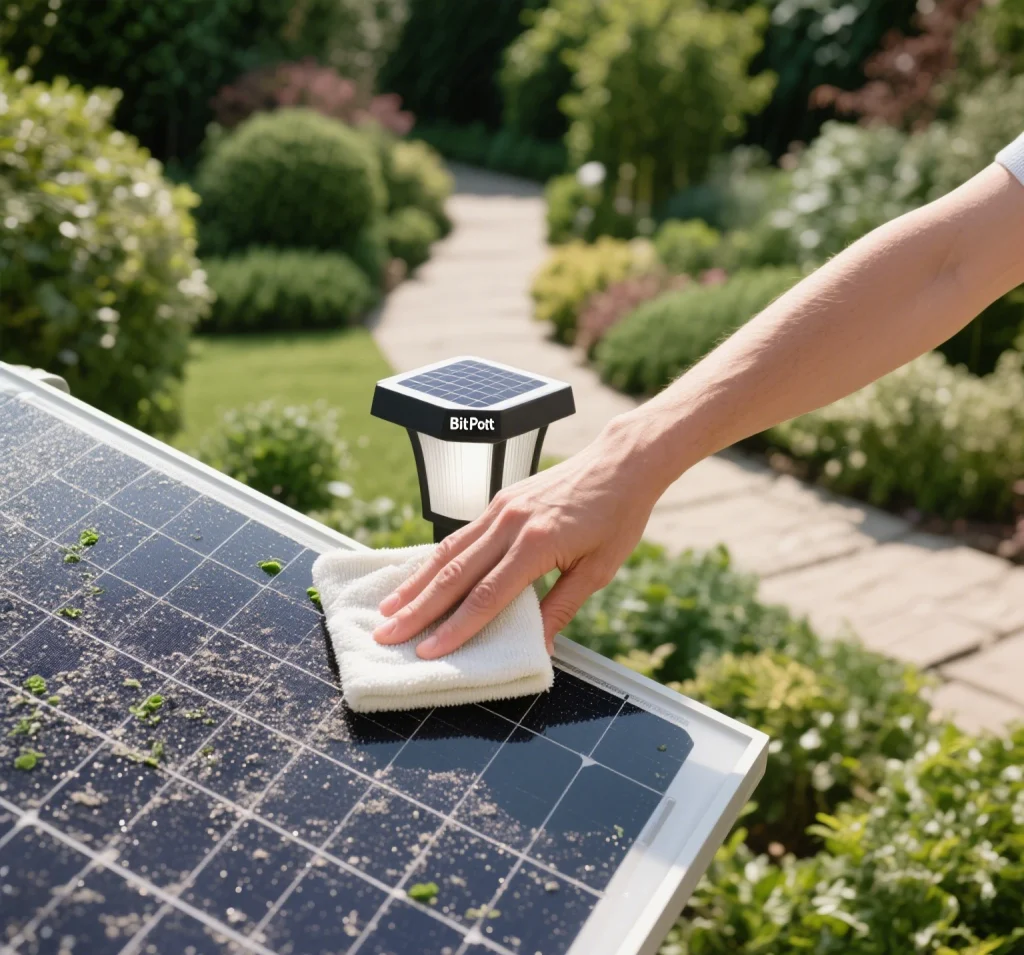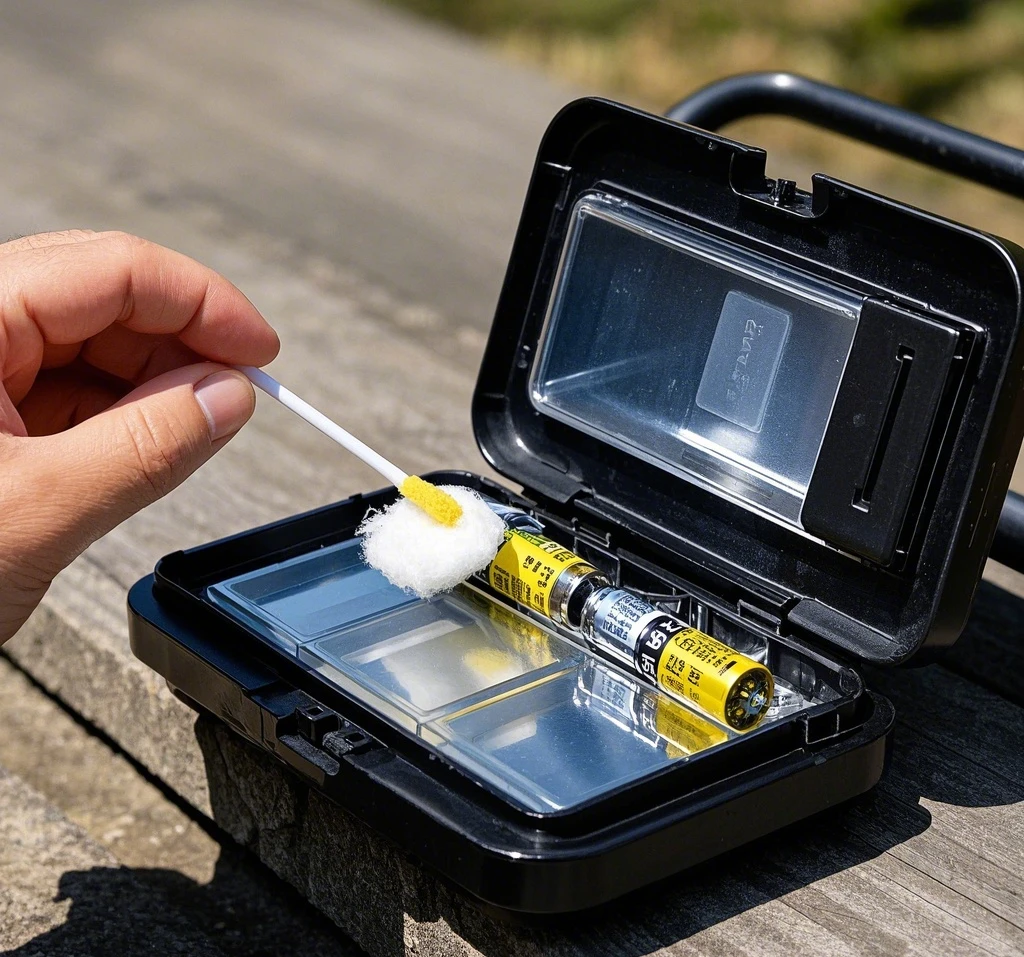Solar garden lights are a sustainable and cost-effective way to illuminate pathways, patios, and landscapes, harnessing sunlight to power energy-efficient LEDs. However, over time, dirt, dust, pollen, bird droppings, and other debris can accumulate on the solar panel, reducing its ability to absorb sunlight and charge the internal battery. Learning how to clean solar panel on garden lights is essential to maintain their performance and ensure they shine brightly. This comprehensive guide provides step-by-step instructions, practical tips, and troubleshooting advice to keep your solar outdoor lights in top condition, extending their lifespan and enhancing their efficiency.

Why Cleaning Solar Panels Is Important
The solar panel on garden solar lights is the heart of the system, converting sunlight into electricity to charge the battery. When debris covers the panel, it blocks sunlight, reducing solar panel efficiency and leading to dimmer lights or shorter illumination times. For example, studies suggest that a dirty solar panel can lose 10-30% of its energy output, depending on the level of buildup. Regular cleaning not only restores brightness but also prevents long-term damage to the panel’s surface, ensuring your solar landscape lighting remains effective.
Common culprits that dirty solar panels include:
- Dust and Pollen: Common in dry or windy areas, these can form a thin layer that scatters light.
- Bird Droppings: Sticky and opaque, droppings can significantly block sunlight.
- Leaves and Twigs: Fallen debris can cover panels, especially in autumn.
- Snow and Ice: In winter, accumulation can completely obstruct light absorption.
By incorporating regular cleaning into your maintenance routine, you can maximize the performance of your solar powered lights and avoid costly replacements.
Tools and Materials Needed
Before starting, gather these tools and materials to ensure a safe and effective solar panel cleaning process:
- Soft Cloth or Sponge: Non-abrasive to avoid scratching the panel.
- Warm Water: Helps loosen dirt without damaging the panel.
- Mild Dish Soap: Gentle enough for delicate surfaces (avoid harsh chemicals).
- Soft-Bristled Brush: For stubborn debris, such as dried bird droppings.
- Bucket: To mix water and soap.
- Ladder (Optional): For hard-to-reach solar pathway lights mounted on poles.
- Microfiber Towel: For drying and polishing the panel.
- Isopropyl Alcohol (Optional): For tackling sticky residues, diluted with water.
These items are typically found at home or available at hardware stores, making solar light maintenance accessible and affordable.
Step-by-Step Guide to Cleaning Solar Panels on Garden Lights
Step 1: Turn Off the Lights (If Possible)
For safety, turn off your solar garden lights if they have an on/off switch, usually located near the battery compartment or on the panel’s underside. This prevents electrical issues during cleaning, especially if water enters the housing. If there’s no switch, clean during the day when the lights are inactive to minimize risk.
Step 2: Inspect the Solar Panel
Examine the solar panel for visible dirt, debris, or damage. Check for cracks, scratches, or discoloration, which could indicate deeper issues requiring repair or replacement. Note the type of debris (e.g., dust, bird droppings) to determine the cleaning method. For example, a user on a Bitpott gardening forum reported that heavy pollen buildup on their solar outdoor lights required a thorough cleaning to restore full brightness.
Step 3: Remove Loose Debris
Gently brush off loose debris like leaves, twigs, or dry dust using a soft-bristled brush or your hand. Avoid using sharp tools or excessive force, as this can scratch the panel’s surface, reducing its efficiency. For solar pathway lights in garden beds, clear away nearby plants or mulch that may contribute to debris buildup.
Step 4: Prepare a Cleaning Solution
Mix a small amount of mild dish soap with warm water in a bucket. A ratio of 1 teaspoon of soap per gallon of water is sufficient to clean without leaving residue. Avoid harsh detergents, bleach, or abrasive cleaners, as these can damage the panel’s protective coating or harm nearby plants in your solar landscape lighting setup.
Step 5: Clean the Solar Panel
Dip a soft cloth or sponge into the soapy water, wring it out to avoid excess dripping, and gently wipe the solar panel in circular motions. Focus on areas with stubborn dirt, such as bird droppings or sap. For tough stains, use a soft-bristled brush, applying light pressure to avoid scratches. If residue persists, a 1:1 mix of water and isopropyl alcohol can help, applied sparingly with a cloth.
Step 6: Rinse and Dry
Rinse the panel with clean water to remove any soap residue, using a gentle stream from a watering can or hose on a low setting. Avoid high-pressure sprays, which can damage seals or force water into the light’s housing. Dry the panel with a microfiber towel to prevent water spots, which can attract dust and reduce solar panel efficiency.
Step 7: Test the Lights
After cleaning, place the solar garden lights in direct sunlight for 6-8 hours to fully charge. Test them at night to confirm they’re brighter and last longer. If performance doesn’t improve, further troubleshooting may be needed, such as checking the battery or connections.

Tips for Maintaining Clean Solar Panels
To keep your solar outdoor lights performing optimally, incorporate these maintenance practices:
- Regular Cleaning Schedule: Clean panels every 1-3 months, or more frequently in dusty, pollen-heavy, or snowy areas.
- Seasonal Checks: Before winter or spring, inspect and clean panels to prepare for changing weather conditions.
- Protect from Debris: Trim nearby trees or shrubs to reduce falling leaves or sap on solar pathway lights.
- Use Protective Covers: In snowy climates, consider removable clear covers to shield panels while allowing light penetration.
- Monitor Performance: If lights dim or turn off early, clean the panel first before assuming battery or panel failure.
A homeowner shared on a renewable energy blog that cleaning their solar landscape lighting panels monthly increased their runtime by 2-3 hours, highlighting the impact of regular maintenance.
Common Mistakes to Avoid
- Using Abrasive Materials: Scouring pads or rough brushes can scratch the panel, reducing its ability to absorb light.
- Overusing Chemicals: Harsh cleaners like ammonia or bleach can degrade the panel’s coating or harm nearby plants.
- Cleaning During Operation: Avoid cleaning at night when lights are on, as water can enter the housing and cause electrical issues.
- Ignoring Nearby Debris: Failing to clear surrounding plants or mulch can lead to recurring dirt buildup on solar panels.
Troubleshooting Persistent Issues
If cleaning doesn’t restore your solar powered lights to full brightness, consider these troubleshooting steps:
- Check Battery Health: Use a multimeter to measure the battery’s voltage (e.g., 1.2V for NiMH, 3.7V for Li-ion). Replace if it’s below the expected range.
- Inspect Connections: Loose or corroded wires in the battery compartment can disrupt power. Clean or tighten as needed.
- Examine the Panel: Cracks or cloudiness may indicate a damaged panel requiring replacement.
- Test Sunlight Exposure: Ensure the panel receives at least 6 hours of direct sunlight daily, relocating if shaded by structures or trees.
A user on a Bitpott thread reported that after cleaning their solar garden lights and replacing a corroded battery, the lights returned to full brightness, avoiding the need for new units.
Benefits of Regular Solar Panel Cleaning
Cleaning your solar panels is a simple yet impactful way to maintain solar light maintenance. Regular cleaning can:
- Extend Light Lifespan: Clean panels charge batteries more efficiently, reducing wear and tear.
- Save Money: Avoiding premature replacements lowers costs, as new solar outdoor lights can cost $10-$50 each.
- Enhance Aesthetics: Brighter lights improve the look of your garden or pathway, enhancing curb appeal.
- Support Sustainability: Maximizing solar efficiency reduces reliance on grid power, aligning with eco-friendly goals.
Environmental Considerations
Maintaining solar garden lights through regular cleaning supports sustainable practices by extending the life of your lights and reducing waste. Using eco-friendly cleaning solutions, like mild soap and water, minimizes environmental impact on your garden’s soil and plants. Additionally, clean panels ensure your solar powered lights operate at peak efficiency, maximizing the use of renewable energy and reducing your carbon footprint.
Conclusion
Knowing how to clean solar panel on garden lights is a vital skill for anyone using solar outdoor lights to illuminate their outdoor spaces. By following a simple cleaning routine—using gentle tools, mild solutions, and regular maintenance—you can keep your solar landscape lighting performing at its best. Whether you’re dealing with dust, bird droppings, or snow, these steps ensure your solar panels absorb maximum sunlight, delivering bright, reliable illumination. With proper care, your solar powered lights will continue to shine, enhancing your garden’s beauty while supporting a sustainable lifestyle.


Leave a Reply